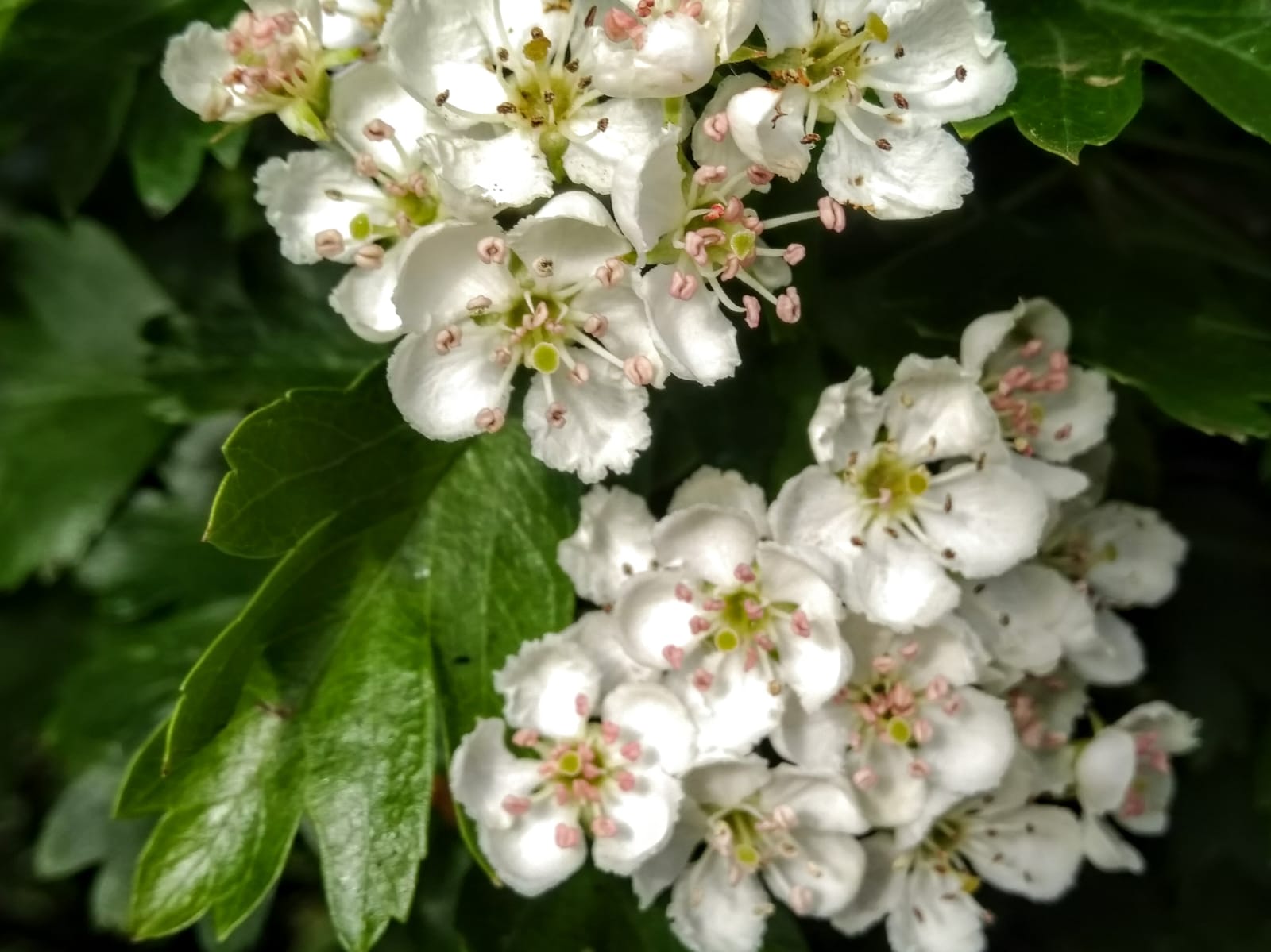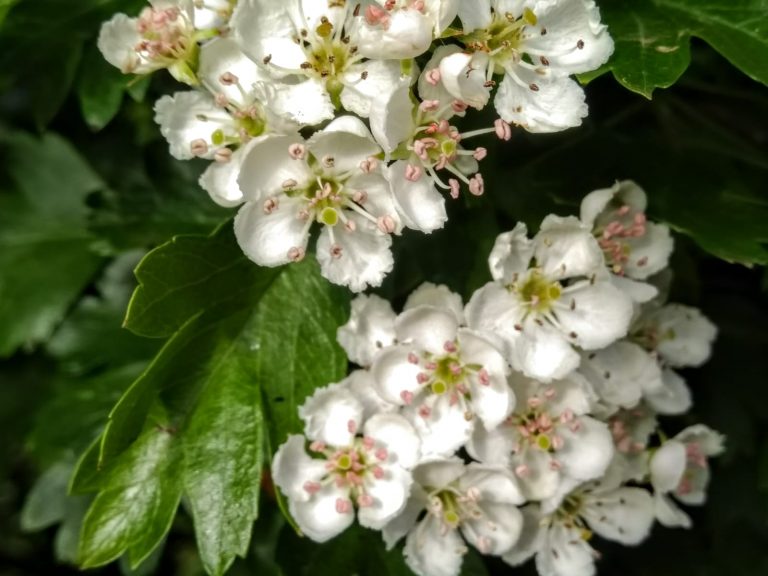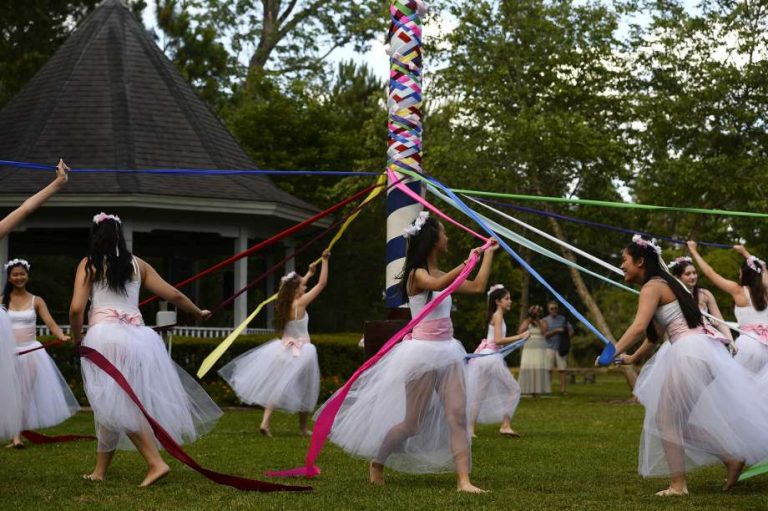This article first appeared in (C) Wiccan Rede * Spring 1980
In this issue of Wiccan Rede we celebrate the season of Spring. Between March and May there are several festivals which appear in both the pagan and Christian calendars. Beginning with March 21st we celebrate the Spring or Vernal equinox. The equinoxes mark the time when day and night are equal in length (i.e. when day and night are both twelve hours long.) The equinoxes and solstices are important points in the cycle of the solar year, as opposed to the ‘cross-quarter days’ which are important points in the agricultural year. The equinoxes and solstices are known as the ‘Lesser Sabbats’ whilst the cross-quarter days are known as the ‘Greater Sabbats’ (Candlemas, May Eve, Lammas and Hallowe’en.)
Doreen Valiente in “Witchcraft for tomorrow” remarks that the ‘lesser Sabbats are the releasing of new cosmic tides at each quarter of the year and the greater Sabbats are its culmination, mid-point or perfection’. So the Spring Equinox is the releasing of the cosmic springtime whilst May Eve is the midpoint of the tide.
The so-called cosmic tides are recognised by pagans and occultists as being powerful and highly influential forces. The equinoxes are strongly flowing tides (one is reminded of the high sea tides at Spring time). This is thought to be a good time to begin occult work. The solstices are milder tides and the emphasis is not so much on ‘work’ as ‘play’: for many people the Winter and Summer Solstice correspond to holiday time.
It is thought that work commenced at one of these solar points needs a full six months to reach completion. Dion Fortune says in ‘Aspects of Occultism’: “causes set going on the inner planes at one equinox will take the full tide of six months to work out on the physical plane, and if we realise this, we shall be content to exercise patience until the cosmic tides at each quarter of the six months are completed”.
The three months between the equinoxes and the solstices have a particularly spiritual feeling. Between the winter solstice and the spring equinox the key word is ‘purification’; during the period between the spring equinox and the Summer solstice the sun is gaining strength and spiritually this is a period of ‘enlightenment’. From the summer solstice to the autumn equinox there is a period of fructification and holiday time when we can ‘enjoy the fruits of the earth’. After the autumn equinox back to the winter solstice the sun diminishes in strength and there is a return to mental work, the key word here being ‘introspection.
The Druids celebrated the equinoxes and the solstices: the spring equinox was called the ‘Alban Eilir’. In the Celtic calendar the spring equinox falls in the fourth month of the year, and if we look at the Tree alphabet (Beth-Luis-Nion) we find that the fourth month is ‘Fearn’ with the Alder as the corresponding tree. The Alder (elzeboom) is the tree of Bran the Blessed (Bendigeidfran). In the second branch of the Mabinogion, the Welsh tale of Youth, one can read the story of Bran and his sister Branwen. They were the children of Llyr. Bran had supernatural powers: he had a cauldron which would restore the dead, but without the power of speech. The myth of Bran and Branwen makes very moving reading and is well worth looking up.
The Alder is one of the sacred trees of Ireland. There are seven all together: birch, alder, willow, oak, holly, hazel and apple. Alder is apparently renowned as yielding the best charcoal and there is a connection with fire in the story of Branwen: her son is buried on a bonfire.
Robert Graves in ‘The White Goddess’ says: ”The Alder is the tree of fire, the power of fire to free the earth from water; and the alder branch by which Bran was recognised at the Cad Goddeu is a token of the resurrection: its buds are set in a spiral.” The Spring Equinox is the point between Pisces (water) and Aries (fire) and marks the rebirth or resurrection of spring, and in the light of the above quotation the alder would seem to be a significant symbol of this point.
Whilst the pagan festival of resurrection is the Spring Equinox, we find in the Christian calendar that Easter is the festival of resurrection. Strangely enough though the word ‘Easter’ is derived from the word ‘Eostre’ which is the Anglo-Saxon name for the Goddess of Spring [Note 1] . The Greek goddess of the Dawn is, incidentally, called ‘Eos’ which seems to reinforce the underlying principle of the ‘new beginning’ which spring beholds. Although Easter is a Christian festival, the actual festival ’time’ is not fixed: that is the date is fixed according to lunar movement, namely Easter Sunday being the first Sunday after the first full moon following the Spring equinox.
One of the most famous Easter symbols is the Easter Egg. The egg too is a symbol of resurrection. There are many myths and fairy tales in which the egg is an important symbol. Quite often it represents ‘creation’, the egg being laid by the Goddess.
Another well-known Easter symbol is the Easter Bunny or Hare. The hare was the sacred animal of Eostre. It is an archetypal moon- and fertility symbol. The hare is swift, prolific, and mates openly. It is also a symbol of self-sacrifice. Hare hunting used to be forbidden except for one day, and that was May Day.
Which brings us nicely to the next of the festivals, namely May Eve. It was said earlier that the equinoxes and solstices are known as the ‘lesser Sabbats’ and the cross-quarter days as the ‘greater Sabbats’ which includes May Eve. May Eve is probably the most joyous of all the festivals and the emphasis is very much on ‘merry-making’. It should be noted that Beltane, which is also celebrated at this time, is not the same as May Eve, although in pagan circles the two festivals are usually celebrated as one. Beltane (Celtic) means ‘Bels fire’ and is named after Belinus, a solar deity. Beltane is in fact one or the four great fire festivals in the Celtic year. May Eve celebrates the coming summer: it is the time when the vegetation really begins to grow. Beltane, which is the opposite of the festival of Hallowe’en (Samhain) is the time of renewed hope and delight of the ending of winter. The Beltane fires were lit on sacred hills, and this custom was celebrated as late as the 18th century in Scotland. (The custom also existed in Wales, Ireland, Scandinavia and Bohemia).
May Day or ‘bringing in the May’ abounds with many customs. The Hawthorn is sacred and begins to blossom when the constellation of the Pleiades rises. The Pleiades is a constellation consisting of seven stars, the seven daughters of Atlas. They are called Maia (May). Electra, Merope, Alcyone, Taygete, Sterope and Calaeno. Summer begins with the rising of the Pleiades, and conversely winter begins with their setting. The Pleiades are also called the Seven Virgins.
One of the most famous of all the May Day celebrations is the dancing round the Maypole. There is a great deal of symbolism attached to the image of the pole. The most significant though is the connection with the ‘world tree’. In Norse Mythology the world tree is called Yggdrasil, which can be translated as the ‘I-bearer’. The tree as archetypal symbol represents the phallic-masculine principle. Its’ ”procreative character outweighs that of sheltering and containing’ (i.e. the feminine)(Erich Neuman in ‘The Great Mother’). There are quite a few myths where the symbol ‘pole/pillar/tree’ is seen as the axis of the world. It also symbolised life, fecundity, and immortality, it formed the link with the ‘all-source’ of the universe.
Trees, of course, play a fundamental role in Nature Worship (not to mention actual Tree Worship). There were the sacred groves of the Druids and there are several goddesses and gods connected with forests and woods.
The Maypole was traditionally made from fir, larch or birch; there were no actual measurements given, although the pole should be wider at the bottom than at the top. The Maypole was cut at sunset on May Eve and then decorated with flowers and ribbons of red, white and blue. On May Day the people would then dance round the Maypole in a clockwise direction.
One of the most important features of the May Day celebrations was the appearance of the King and Queen of the May. Traditionally, in England at least, the most famous King and Queen of the May were Robin Hood and Maid Marian. Robin, who was the woodland outlaw who ‘robbed the rich to give to the poor’ is still perhaps the most famous hero of English tradition, (along with King Arthur). It is not absolutely certain if such an outlaw ever existed, although one source states that he was born in Wakefield, Yorkshire. between 1285 and 1295, during the reign of Edward II.
Robin (the name means ram) is usually thought of as living in Sherwood Forest in the County of Nottingham. Along with his band of men, a renegade friar called Tuck and Maid Marian they spent the summer months in the forest, or greenwood, and during the winter they would travel around England. (One possible reason why the figure of Robin Hood appears in other parts of England.) The whole band of merry men totalled thirteen and it has been suggested that this was in fact a Coven. It is quite possible that Robin was pagan, although we are often led to believe that England was Christianised by the 13th century. Even in the more popular stories of Robin Hood he always swears by ’the Lady’. It has been suggested that Robin and his band were worshippers of the ‘Mary cult’, which was brought to Europe by the crusaders. This was the same cult which had inspired the troubadours, wandering minstrels such as Blondel, and brought about the period known historically as ‘courtly love’. The Mary Cult had been banned by Constantine, the first Christian emperor, but it still continued. Mary was identified as the Anglo Saxon ‘May Bride’ and connected to the may tree cult. The link between Maid Marian and Mary is not too difficult to see. As Maid she was quite probably maiden of the Coven.
The popular image of Robin suggests that he may be pagan, but if we look at another of his namesakes we shall be left in no doubt as to who he was. Also called Robin Goodfellow, Robin is described as God of the Witches with young rams’ horns sprouting from his forehead, rams’ legs, and a witch’s besom over his left shoulder, a lighted candle in his right hand. He is pictured with a group of men and women performing a dance. The Somerset witches called their God Robin (The Horned God).
Robin has also been connected with fairies. He and his merry men wore clothes of green or russet which are typical ‘fairy colours’. Another name for Robin is Puck, immortalised by Shakespeare in ‘A Midsummer Night’s Dream’. Incidentally the merry men, or Mary’s men are the Morris Dancers of folk-dance tradition.
To summarise then, the Spring Equinox celebrates the strengthening sun and the rebirth or resurrection of Spring. May Eve celebrates the greeting of Summer when the Goddess appears as the Maiden. A merry month indeed!
Sources
- R. Graves: The White Goddess (Faber)
- D. Fortune: Aspects of Occultism (Aquarian)
- E. Neumann: The Great Mother (Princeton/Bolingen)
- D. Valiente: Witchcraft for Tomorrow (Robert Hale)
- M. Murray: God Of The Witches (Oxford University Press)
Other references and notes:
Robin Goodfellow image: https://en.wikipedia.org/wiki/Puck_(folklore)#/media/File:Puck_1629.JPG
Image of dancing round the Maypole: https://www.beaumontenterprise.com/news/article/Photos-Dancers-wrap-maypole-at-festival-11144265.php
[Note 1] “The Anglo-Saxons worshipped the goddess Eostre, referred to by the Venerable Bede in De Temporum Ratione (AD 725), in which he also mentions the indigenous English name of the month: “Eostur-monath has a name that is now translated as ‘Paschal month’, and which was once called after a goddess of theirs named Eostre, in whose honour feasts were celebrated in that month.” It has often been suggested that Eostre was an invention of Bede’s, as very little is known about her otherwise, and a body of opinion theorising against her existence still has some popular cultural currency, but the evidence in Bede’s favour is compelling.
Read more at https://www.thefield.co.uk/country-house/easter-eostre-24035#Aq2RilL0XY2lId4q.99



